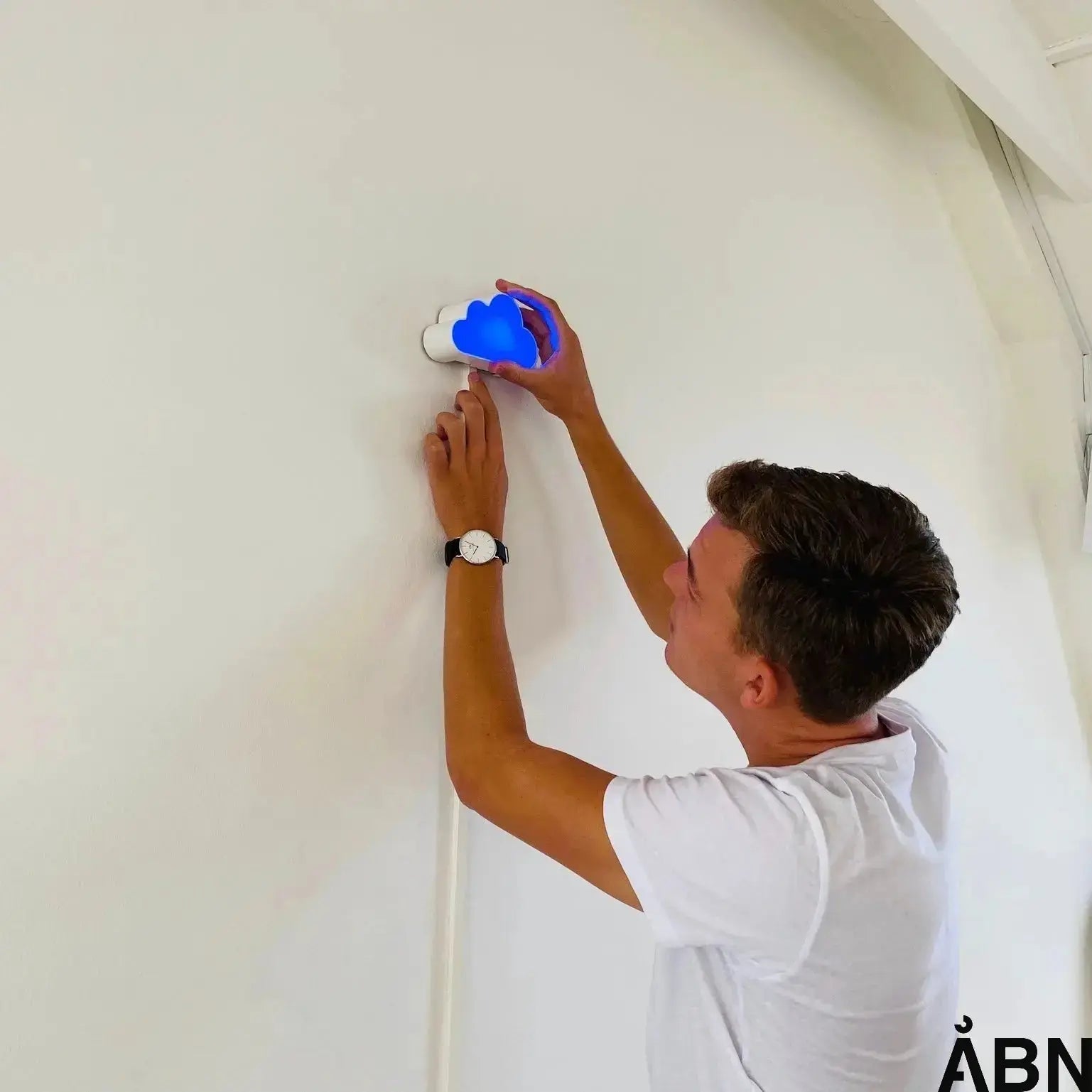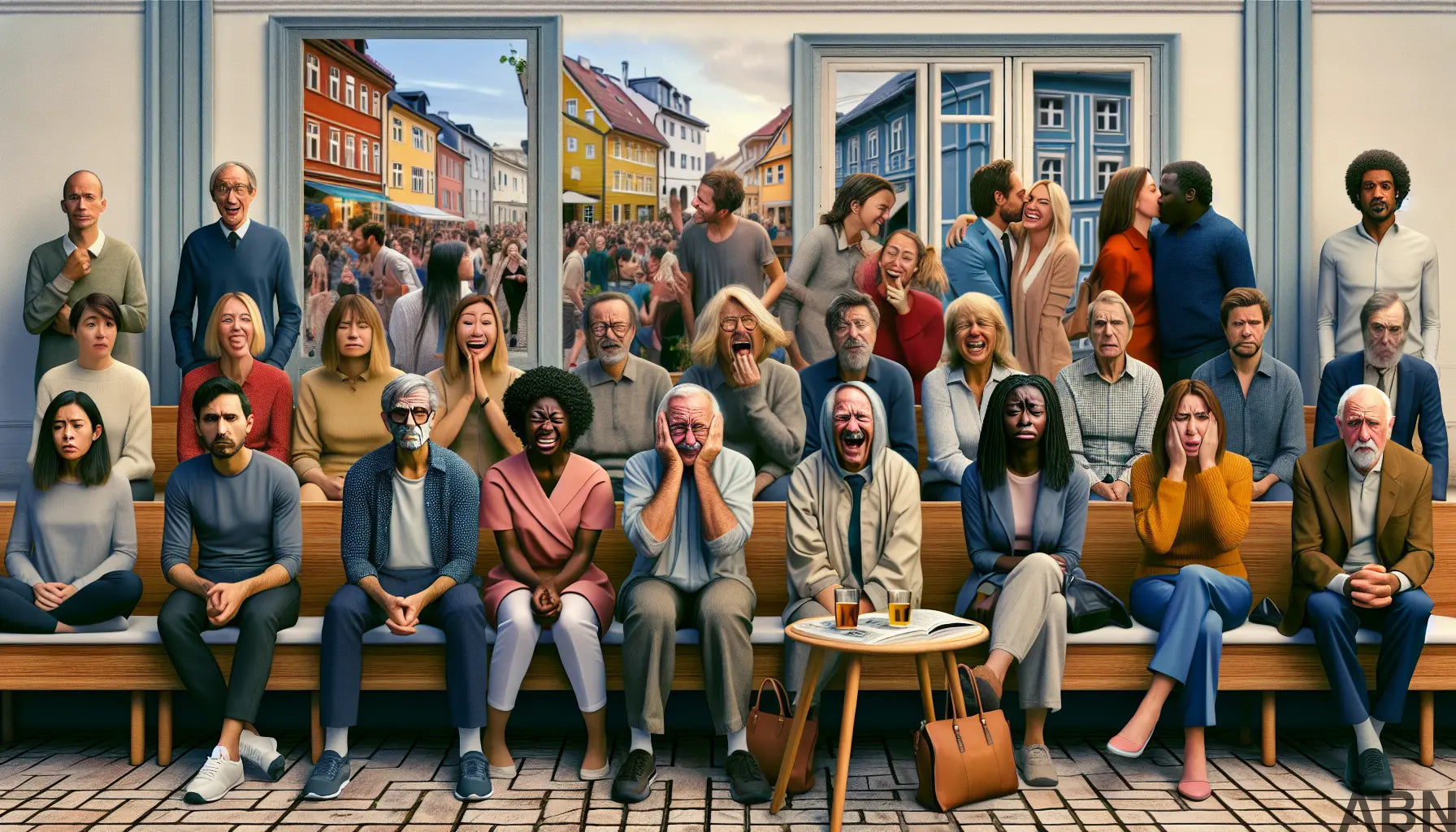Noise limits and noise calculation: How many decibels is noisy?
Noise is an invisible but omnipresent factor in our everyday lives. It can creep in like a distant highway hum or burst in like a sudden siren. But when does noise actually become a problem? How many decibels is noisy – and what does it mean for our health, well-being and working environment?
In this article, we delve into how noise is measured, what limit values apply in Denmark, and how you as a professional or parent can understand and act on noise in your surroundings. We also look at how technology from ÅBN can help make noise and indoor climate visible and manageable – for both people and the environment.
What is decibel – and how is noise measured?
Noise is measured in decibels (dB), which is a logarithmic scale. This means that an increase of 10 dB corresponds to a doubling of the perceived loudness. A sound of 60 dB therefore feels twice as loud as a sound of 50 dB. This makes it extra important to understand where on the scale a given sound falls.
Here are some examples of typical sound levels:
- 30 dB – whisper in a quiet room
- 50 dB – normal conversation
- 60 dB – vacuum cleaner or heavy traffic
- 70 dB – busy street or noisy office
- 85 dB – lawn mower or near a highway
But where is the limit when noise becomes annoying – or even harmful to health?
When is noise noisy? The Danish limit values
According to the Danish Road Directorate's Noise Action Plan 2024-2029, the guideline limit value for road noise at homes is 58 dB. If the noise exceeds this level, the home is considered to be noise-polluted. At 68 dB or higher, homes are considered to be heavily noise-polluted.
These limits are not random. They are based on research and assessments from, among others, the Danish Health Authority , which indicate that noise above 58 dB can have negative health effects – including sleep disturbances, stress and an increased risk of cardiovascular disease.
The noise limits apply particularly to traffic noise, but noise from businesses, railways, aircraft and wind turbines are also assessed based on similar principles. The Høje-Taastrup Municipality's Noise Action Plan 2025 also states that noise at night above 50 dB can be particularly problematic, although there is no official national limit for nighttime noise.
Noise in numbers: How many are affected?
According to the Danish Environmental Protection Agency's mapping, a total of 723,000 homes in Denmark are exposed to road noise above 58 dB. Of these, approximately 141,000 homes are heavily noise-contaminated with levels of 68 dB or more. This corresponds to almost one in five Danes living in a noise-contaminated area.
Noise is not just an urban phenomenon – it is a nationwide challenge that requires attention and action.
The consequences of noise: More than just annoyance
Noise is not just a nuisance – it is an invisible guest that can affect both our physical and mental health. According to the Danish Health Authority, prolonged exposure to noise can lead to:
- High blood pressure and cardiovascular disease
- Sleep disturbances and fatigue
- Stress and decreased concentration
- Learning problems in children
For children in schools and daycare centers, noise can be particularly harmful. It affects their ability to learn, concentrate and feel safe. Therefore, it is crucial to create noise-aware environments – both in public and private settings.
How is noise calculated – and how can it be measured?
Noise is typically calculated as an average over time, often called Lden (day-evening-night level), which weights noise more heavily in the evening and night. This gives a more accurate picture of the overall noise exposure.
But in practice, it can be difficult to relate to average figures. That's why it's important to be able to measure and visualize noise in real time – and this is where technology like ÅBN's Cloud comes into the picture.
Visualization of noise and indoor climate with ÅBN
At ÅBN, we work to make indoor climate as understandable as the weather forecast. Our intuitive sensors and dashboards make it possible to see how noise, CO₂ and temperature develop in real time. This gives facility managers, school leaders and parents a concrete tool to act on problems – before they become big.
Imagine a classroom where the teacher can see that the noise level exceeds 65 dB. With a glance at the screen, you can take a break, change your behavior or adjust your surroundings. It's not just technology – it's a new way to understand and improve our everyday lives.
Read more about how we work with behavior change and documentation in practice.
What can you do if you experience noise nuisance?
Whether you are a parent, municipal employee or facility manager, there are several steps you can take:
- Identify the source: Is it traffic, ventilation, machinery or human activity?
- Measure the noise: Use a decibel meter or contact a professional for a noise assessment.
- Document over time: Note times, duration and impact – especially if it concerns children or vulnerable groups.
- Get in touch: Municipalities and housing associations often have noise action plans and can help with solutions.
- Use technology: With solutions like ÅBN Inside, you can get an overview of noise and indoor climate in your buildings – and act proactively.
Noise and sustainability – two sides of the same coin
Noise is not just a matter of comfort – it is also part of the sustainability agenda. A good acoustic environment promotes well-being, learning and productivity. It reduces the need for medication, sick days and energy consumption for ventilation and cooling.









